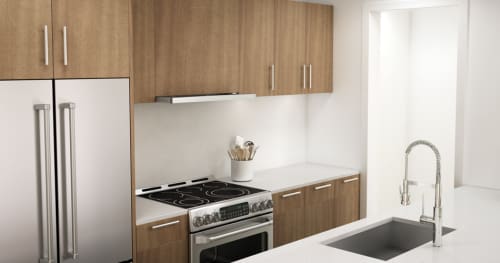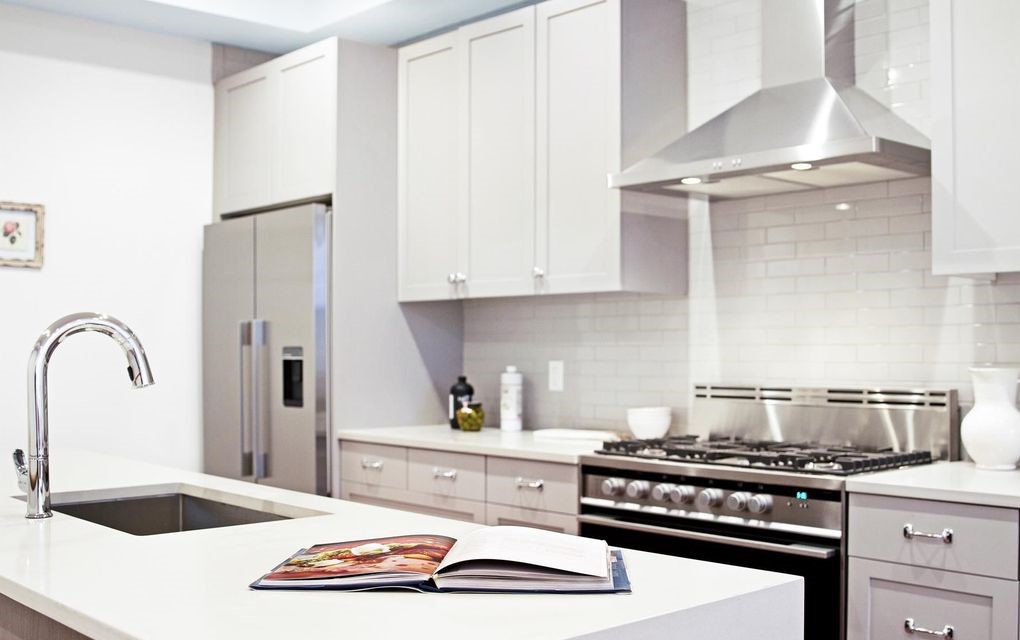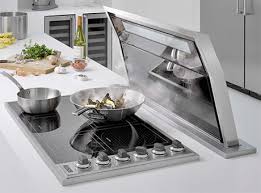Airing Out Your Kitchen
by C. Rosenberg
Enticing smells coming out of your kitchen are sure to award you with a homemakers’ awards, but what you may not realize is that culinary efforts also result in less-desirable elements. Moisture, grease, odors, and heat from stove-top food preparation are not things you want stagnating in your kitchen. The good news is that you can prevent it with a good ventilation system.
How to Vent
There are two types of vent systems: Ducted and Ductless. Ducted systems move air out of the kitchen, whereas ductless systems suck up the air to filter it.
The benefits of a ducted system are pretty obvious: Your air gets really nice and clear. However, in order to make use of that benefit, you’ll be somewhat limited in where you can place the vents. You’ll need to have pipes leading to an exterior passage. Ductless vents are generally found in commercial kitchens.
Ductless vents don’t need pipes with access to the outdoors, and are therefore easier to place in the kitchen. (You will need to replace the filter on a ductless vent, but that is a pretty simple task.)
Choose Your Vent
Choosing hoods for your venting system can be fun. Although the purpose of a hood is functional, manufacturers don’t forget about aesthetics when it comes to hoods. Here are some popular options:
Under-Cabinet Hood
Under-cabinet hood is pretty popular and compact. This can be mounted directly beneath the cabinet which sits above your stove top, and

blends into the design quite seamlessly. It’s important to have exact measurements of the cabinet before purchasing this type of vent, as
you’ll need it to fit perfectly.
These hoods can provide both ducted and ductless systems. In the case of a ducted system, the hood will be on an exterior wall, and either have a direct line to duct pipes leading outdoors, or there will be duct pipes leading out through the cabinet above the hood.
Over-The-Range Microwave with Vent
 If you keep your microwave above your stove top, you might want to look into a hood-microwave combination. These styles feature a built-in vent fan on the underside of the microwave that serves as a vent. The combination of microwave and vent allows one appliance to perform dual functions, saving you space.
If you keep your microwave above your stove top, you might want to look into a hood-microwave combination. These styles feature a built-in vent fan on the underside of the microwave that serves as a vent. The combination of microwave and vent allows one appliance to perform dual functions, saving you space.
Wall-Mount Hood

Wall-mounted hoods are directly attached to the wall above the range, and will most likely be higher than a cabinet-mounted hood. Although they may be more expensive than under-cabinet ranges, wall mounted ranges are available in a large variety of styles and will add oomph to your kitchen.
Ceiling-Mounted Hood
What if you have a stovetop on an island, or another area doesn’t lean against a wall? Ceiling mounted hoods are the answer. You can find them in many different styles and materials (think copper, glass, ceramic, etc.) and can easily turn into the focal point of your kitchen.
Most models require an exterior duct system. The good news is that since the hood is attached to the ceiling, you can find a direct line outdoors, and don’t need to install pipes in cabinets.
Downdraft Vent Hood
A less common – yet very effective – ventilation system is called a downdraft hood. This product is hidden in your stovetop, and can be

pulled out as necessary. It pulls air to back of the cooktop through built-in vents to filter your kitchen air. Since this is hidden much of the time, (and pretty small even when not), it won’t alter the look of your kitchen much.
~~~~~~~~~~~~~~~~~~~~~~~~~~~~~~~~~~~~~~~~~~~~~~~~~~~~~~~~~~~~~~~~~~~~~~~~~~~~~~~~~~~~~~






